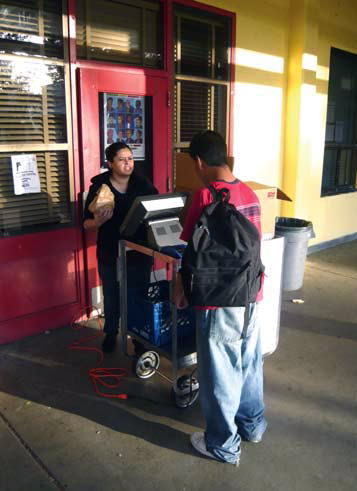Healthy Eating & Fitness Are a Top Priority
Over the past 30 years, the percentage of children and youth in California who are overweight or obese has increased dramatically. Unless they develop healthy eating and fitness habits, and have access to healthy food and activity environments, children and adolescents are at greater risk of developing the many health problems associated with overweight and obesity. These problems include a wide range of chronic diseases, including type 2 diabetes, hypertension, many forms of cancer, and respiratory problems.
Although exact estimates vary, it is clear that overweight and obesity rates are very high. According to the 2007 California Health Interview Survey, 12% of children between 5 and 11–and 15% of those living in poverty–are overweight for their age.1 Among adolescents aged 12-17, 13% are overweight or obese, with this figure climbing to 23% among those in living in poverty.2 A report from the California Center for Public Health Advocacy and the UCLA Center for Health Policy Research notes that, while the trend may be slowing or even reversing, major problems and disparities remain.
A Nation at Risk: Obesity in the United States Statistical Sourcebook, from the American Heart Association and the Robert Wood Johnson Foundation, contains data on the prevalence and possible causes of obesity, and highlights the inequalities that are central to understanding this issue.
School-Based Health Centers Promote Nutrition & Activity
School-based health centers (SBHCs) deliver both clinical and non-clinical services to reduce overweight and obesity and prevent type 2 diabetes. Recent research shows that adolescent SBHC users get more physical activity and eat more healthy foods than do SBHC non-users.3 Our fact sheet, Improving Nutrition and Physical Activity, describes model program components, staffing, keys to success, and evaluation measures, as well as profiles of eight innovative programs addressing the health needs of students all over California in fun and creative ways.

SBHCs can play a key role in schoolwide wellness efforts. With funding from the S.D. Bechtel Jr. Foundation, five Oakland schools identified “Wellness Champions,” many of whom are SBHC staff, and are now working to increase healthy eating and physical activity on campus. To learn more about these schools’ approaches and successes, see case studies focused on school wellness councils, healthy eating, and youth leadership.
Diabetes
Resources for Practice
Success Stories
Citations
(1) California Health Interview Survey, 2007.
(2) California Health Interview Survey, 2007.
(3) McNall, M.A., Lichty, L.F., & Mavis, B. (2010). Impact of School-Based Health Centers on the Health Outcomes of Middle School and High School Students. American Journal of Public Health. 100(9): 1604-1610.
(4) California Health Interview Survey, 2007.
(5) California Health Interview Survey, 2007.
(6) California Health Interview Survey, 2007.
(7) Rafalson, L., J. Eysaman, and T. Quattrin. “Screening Obese Students for Acanthosis Nigricans and Other Diabetes Risk Factors in the Urban School-Based Health Center.” Clinical Pediatrics 50.8 (2011): 747-52.
(8) Mcnall, Miles A., Lauren F. Lichty, and Brian Mavis. “The Impact of School-Based Health Centers on the Health Outcomes of Middle School and High School Students.” Am J Public Health American Journal of Public Health 100.9 (2010): 1604-610.
(9) Izquierdo, Roberto, Philip C. Morin, Kathleen Bratt, Zoryana Moreau, Suzanne Meyer, Robert Ploutz-Snyder, Michael Wade, and Ruth S. Weinstock. “School-Centered Telemedicine for Children with Type 1 Diabetes Mellitus.” The Journal of Pediatrics 155.3 (2009): 374-79.





